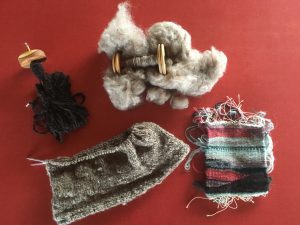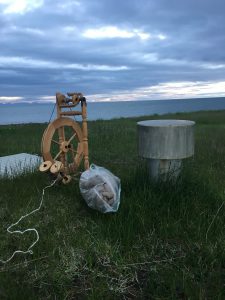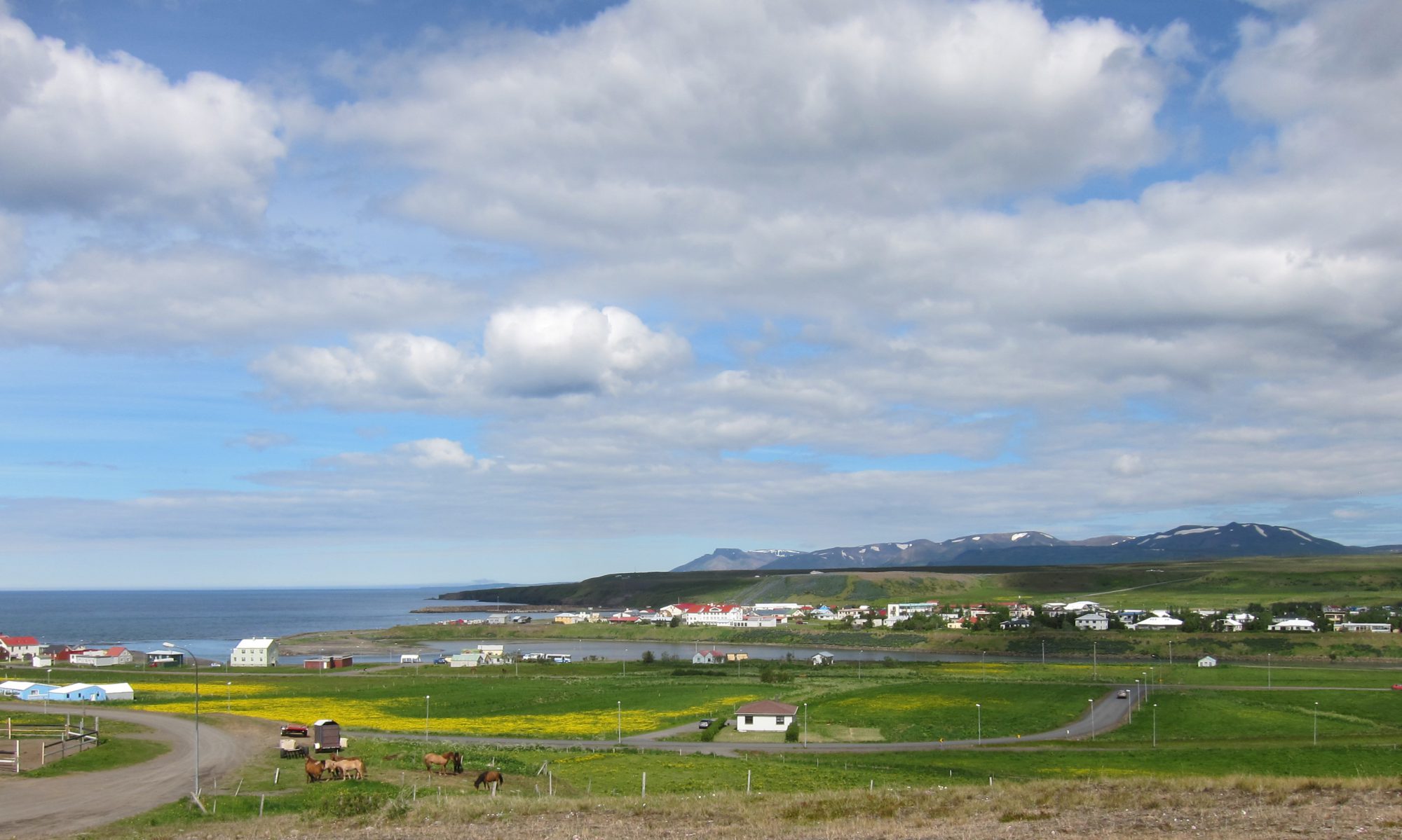It took a few days for me to settle in and realize that it was indeed a textile residency that I had signed up for. On one level I knew that this wonderful field school opportunity would mean a month of working with fibers… but I don’t think that my hands knew and understood what they were getting into. Three days in, after spinning wool and weaving tapestry in workshops, I found that I could not let myself sleep until I was finished the small tapestry I had started earlier that day. My hands just wouldn’t stop and not only that, but some nearly manic compulsion had awoken in me to Produce!
“Produce! One more row! Keep at it! One small step at a time!!” said my inner voice beating the drum in my ear.

The midnight sun did not help to calm this drive. Our studio at the Textílsetur has windows all along the western facing wall and we are so fortunate to be able to watch the sun setting over the sea as we craft. Those of us who caught the weaving bug worked into the night as the setting sun gradually filled the studio with an orange glow.

It was then that I finally realized (and relaxed into it). At last, here in Blönduós for the month of June, I had time to craft. A passion for fibres that has literally been stuffed into closets and put away because there is simply not time for quilting and tailoring in the busy school year, finally taken off the back burner and set to boil.
Fibre art is a time-based labour. One stitch at a time amounts to many. The slow growth can be addictive. All it takes is time. Just give your time.

Many days of labor are contained within one sweater, especially if we consider all of the steps required to transform wool off the back of a sheep into a fine yarn for knitting. There is an artist here in residence that is doing exactly that. Deborah Gray (deborah.gray7 on instagram) is cleaning, carting, dying and spinning the wool, everything short of shearing the sheep herself. And perhaps now this work is considered extraordinary, especially since a short walk to the grocery store would allow her to purchase all the yarn she needed, in whatever colour, in whatever thickness. What is now a unique and perhaps meditative hobby, used to be an essential skill. “It was for subsistence. If you wanted to be clothed, if you wanted rope or fabric for your sails, you needed to know how to work with fibres and you put in the time.” she says.
Industrialization has surely sped up the processing of fibres as well as removed the obligation of holding fibre skill and knowledge in our hands. But in our choosing, if we find a rhythm with wool and wheel, a spinning wheel can be a time machine. A warp and weft can arouse a body memory older than the bones in our hand and an age-old craft can be followed back on a thread many generations. But it takes time.

